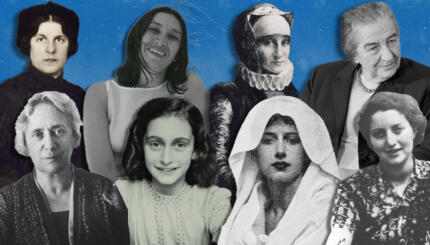Kol Sasson Congregation was founded in Skokie, Illinois in 2003 as a Shira Hadasha-style minyan. At first, we met on Friday night only, and all of our members belonged to other local synagogues. In 2006, we met for our first High Holiday services, and quickly transitioned to meeting every Shabbat and for every holiday. I have been involved since the beginning, and was also the minyan’s first president. Here are some things that I learned along the way.
After establishing a listserv to reach potential attendees for Kabbalat Shabbat, one of the first things that we did was to find a halakhic adviser. (At the time, there was not an option for a maharat, an Orthodox woman clergy member; and although this issue has not come up, I am sure that our community would accept a maharat as well as a rabbi to be our halakhic adviser.) For our community, this was particularly important because when we started, none of us felt particularly competent on halakhic matters. Even now that we have three Yeshivat Chovevei Torah rabbis as members, we continue to use a halakhic adviser. This has allowed us to focus our organizational efforts on building and administering our growing community instead of spending our time debating specific halakhic matters. Curiously, we have never had a halakhic adviser who attended our services regularly. This has not been by design, but may have had the serendipitous effect of allowing us to continue to be lay-led and to seek halakhic advice only when we feel that we needed it.
Concurrent with our formation, many other similar minyans began to form around the world, and many people advocated for a handbook that would outline normative prayer practices for these types of minyans. We never participated in this endeavor, and I never thought a handbook was a good idea because each community needs to find what works for them. For example, Shira Hadasha in Jerusalem waits for 10 men and 10 women before it starts prayers. Our first halakhic adviser suggested that we not go beyond the halakhic requirements, so we wait for 10 men and then get started. From a practical manner this was essential — we are a much smaller community than Shira Hadasha is. Had we waited for 10 men and 10 women, we would have frustrated our nascent community with long delays and cancelled services. Our growth and success may have suffered irreparably.
Once we began meeting for the High Holidays, we needed to raise money to rent a space. In order for community members’ contributions to be tax deductible, we needed to meet the requirements of IRS section 501(c)(3) — including drafting a set of bylaws. For our first set of bylaws, I used some boilerplate language from a church that I found online, which met the minimal requirements under the regulations. They were vague regarding governance, which provided us with maximum flexibility allowing us to develop an operating structure organically. Our second set of bylaws memorialized our structural and procedural development. For a small organization, the details of the bylaws are much less important than organizational personality. One needs to run an organization with the maximum amount of transparency and consensus compatible with efficiency. Those practical details will be different for each organization so good leadership is essential.
How to find that first good leader is a mystery to me, but I think there are two things that are essential for continued good leadership. The first is succession. I consider a leader a failure if he/she has not actively fostered his/her own successor. No matter how good a leader is, an organization will suffer from sclerosis if new leaders are not allowed to develop and flourish. Kol Sasson is in its 10th year since incorporation, and we are currently searching for our fifth president. The corollary to succession and the second essential component is mentoring. We accomplish this by keeping our past leadership involved and by having a clear ideology. The organization then has a historical memory that we can pass on from generation to generation.
Our ideology is a key part of our historical memory and it is what makes us who we are. Early on, we worked with a professional consultant, and together with the entire membership, we developed a mission statement. It has served as a touchstone for everything that we do. You can find the complete text here. A prose summary that we use widely in our literature is as follows.
Kol Sasson Congregation is an inclusive, observant community in Skokie, Illinois that strives to transform Jewish lives through critical inquiry within the traditional framework of Halakha. We encourage men and women to participate in ritual and leadership roles – creating a generous and vibrant community with joyful tefillah.
We specifically do not define ourselves as feminist. We felt that inclusivity subsumes that; we felt that our desire to be inclusive extends beyond women’s issues; and we hoped that one day the term feminism in a mission statement would appear archaic as it would be an assumed component of all Jewish communal life.
Ultimately, our ideology is important because it creates a community of joyful prayer. The women sing joyfully because of their new-found empowerment; the men sing joyfully in concert with the women; together their voices rise up to heaven as an expression of this partnership among women, men, and God.
I am in awe of what we have accomplished at Kol Sasson Congregation given our relatively small community and limited resources. I attribute that to the power of our ideology. Because that ideology is so compelling to thoughtful, educated Jews, it attracts a group of people who are intrinsically committed to any endeavor that they undertake. I imagine that our success will be replicated throughout the world as a new generation of reflexively inclusive, educated, and spiritual Jews assumes leadership positions.
To learn more about independent minyans, check out “The Independent Minyan and Havurah Phenomenon.“
Shabbat
Pronounced: shuh-BAHT or shah-BAHT, Origin: Hebrew, the Sabbath, from sundown Friday to sundown Saturday.
Torah
Pronunced: TORE-uh, Origin: Hebrew, the Five Books of Moses.



